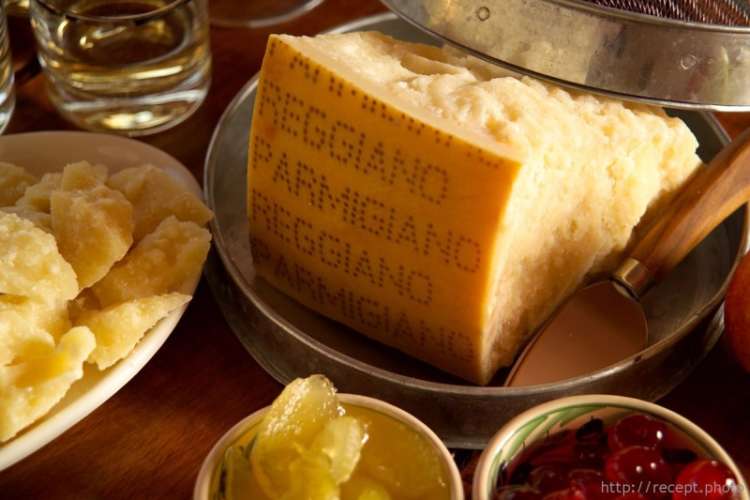Italian Parmesan Cheese - Interesting Facts

Italian Parmesan cheese (Parmigiano-Reggiano) is called the king of cheeses. Cows that produce milk must eat a strictly defined grass that grows only in five Italian provinces (Parma, Reggio Emilia, Modena, Padua and Bologna). Cows can only be milked and the milk processed by hand.

Italians claim that they have not violated the rules of cheesemaking for 800 years. Parmesan is made from unpasteurized cow's milk from two separate milkings (calorizator). The cheese matures for one year or longer. The finished cheese must meet strict standards: diameter 35-45 cm, height 18-25 cm, weight 24-44 kg, rind thickness 6 mm. Its aroma is sweet and fruity, the color is fresh, yellow.
The brand name - Parmigiano Regiano - is printed all over the crust so that even the smallest piece can be identified.
Parmesan can be stored in the refrigerator for several months and freezes well.
Instead of antibiotics
Parmesan has unique nutritional properties, as it contains more vitamins and minerals than any other known cheese.
— It contains only 30% of water, the remaining 70% are useful nutrients. For comparison: other cheeses are at least half water, — says dietitian and specialist in eating disorders Silvia Bigucci. — 100 grams of Parmigiano-Reggiano contain as much protein as 300 grams of beef, but much less cholesterol. 50 grams of Parmesan satisfy the body's daily need for calcium with 70%, protein with 50%, phosphorus with 40% and vitamin B12 with 140%.
Nutritionists from the Italian Winter Sports Federation (Federazione Italiana Sport Invernali) confirm that Parmigiano-Reggiano has long been on the menu of many teams, from football to skiing. According to them, a plate of pasta generously sprinkled with formaggio gives an athlete more energy than any vitamins or food supplements.
Parmigiano — the only dairy product that is allowed for people with lactose allergies, this cheese does not contain it! Already at the initial stages of preparation, a number of beneficial bacteria develop extremely quickly in it, which completely break down lactose, which does not happen with other cheeses. And because of the many enzymes that help to easily digest this formaggio, even babies are fed with it. A baby crawling in a playpen and sucking on a Parmesan crust is a common picture in Italian homes.
It has been scientifically proven that after 15-18 months of aging, the Parmigiano enzymes acquire therapeutic properties, says Silvia Bigucci, and are used to treat viral and bacterial enteritis, which babies often suffer from. Forma can completely replace antibiotics in these cases.
Calorie content of Parmesan cheese
The calorie content of Parmesan cheese is 392 kcal per 100 grams of product.
Composition and useful properties of Parmesan cheese
Parmesan cheese is a very nutritious and healthy cheese. It is a source of natural protein and contains all the essential amino acids necessary for a person to function normally.
It is recommended to consume this cheese for pregnant and lactating women, children, teenagers, as well as people engaged in heavy physical and mental work.
Uses of Parmesan Cheese in Cooking
Parmesan cheese is a popular product in cooking (calorizator). It is used in grated form, sprinkled on all kinds of salads, risotto and hot dishes.

Gourmets eat it in small pieces, washing it down with red wine.
Parmesan is also used for various delicious sauces.

One of them is Pesto sauce. The recipe is very simple.
Pesto sauce

Blend 50 g basil, 2 cloves of crushed garlic, 50 g Parmesan, 3 tbsp pine nuts, 100 ml olive oil and salt in a blender.
Pesto sauce is best used with pasta.
